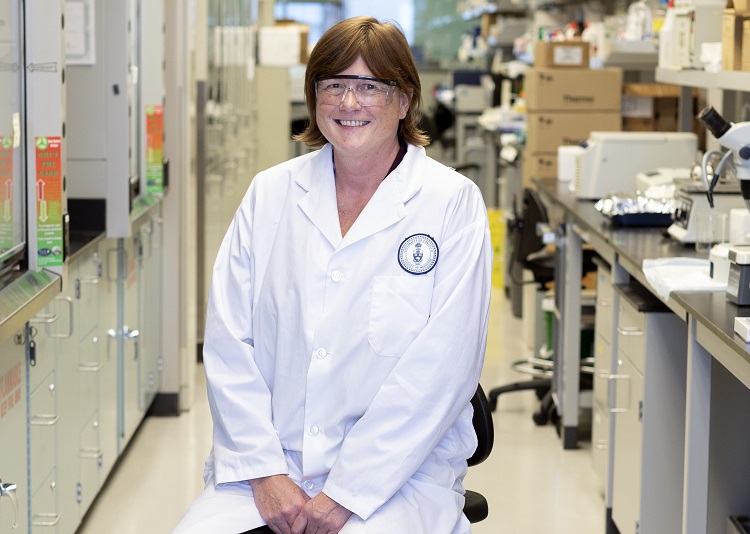New chair in ALS research honours inspiring champion
 Featured Image Caption
Featured Image Caption
The James Hunter Family Chair in ALS Research will boost research into developing therapies to treat and find a cure for the devastating neurological disease that leads to paralysis and death.
Posted on October 19, 2018
Amyotrophic lateral sclerosis (ALS), also known as Lou Gehrig’s disease, is a devastating neurological condition that results in the degeneration of motor neurons from the brain and spinal cord, leading to paralysis and death usually within 2-5 years. There is currently no effective treatment to halt or reverse ALS, and the specific cause remains unknown. But thanks to a new gift from the family of the late Jim Hunter, who crusaded to raise funds for research into the disease that took his life in 2016, there is greater hope that we are closer to a better understanding of the disease and developing effective treatments.
The family’s gift to the University of Toronto’s Faculty of Medicine establishes the James Hunter Family Chair in ALS Research. It is part of a larger James Hunter Family ALS Initiative, which has raised over $5 million to support ALS research at U of T’s Tanz Centre for Research into Neurodegenerative Diseases.
New hope for a devastating disease
Janice Robertson, who heads the James Hunter Laboratory at the Tanz Centre, is the inaugural chair-holder. She is a world-renowned expert in ALS and was close to Jim Hunter, and continues to be so with the Hunter family. “I am honoured to hold this Chair,” says Robertson, who is also a professor of Laboratory Medicine and Pathobiology at U of T. “Jim was an incredible, inspiring human being who was so well read in the field. It gives you a greater sense of purpose when you have interaction with families like the Hunters.”
The funding, says Robertson, enables her and her colleagues to focus on specific research areas, such as the SOD1 gene and the key proteins that cause the disease. It also allows her to attract the best post-doctoral and graduate students to work with her in the laboratory. “We have a really excellent team. Each of the researchers not only works in the lab but also has links to the clinic at Sunnybrook which is led by my close colleague, Dr. Lorne Zinman, who is also an associate professor in U of T’s Division of Neurology. This facilitates an even broader understanding of the disease and its devastation on families,” she says. “And that link provides increased motivation, leading to their commitment to the field. I’m so grateful that I can train these young people in ALS research and continue Jim Hunter’s legacy.”
Basic and clinical research partnering with industry
Robertson’s lab is considered one of the top labs internationally for its work. “Fellow academics and private sector organizations seek us out for collaboration on investigative research into therapeutic development,” she says. “These collaborations are critical to translate findings in the laboratory to effective treatments in the clinic.”
For Robertson and her team, the ultimate goal is to find a therapeutic that can slow down or halt the disease entirely. “We’ve been working on immunotherapy, and we were one of the first teams to go down that road for SOD1,” says Robertson. “More funding – especially when unrestricted in this way – allows us to participate in the global effort towards understanding and treating ALS. It is a complex disease, but I am very optimistic that we are not far from discovering targeted treatments that will give hope to patients and families.”
Support the The James Hunter Family ALS Initiative at the Tanz Centre for Research in Neurodegenerative Diseases.
Donate Now